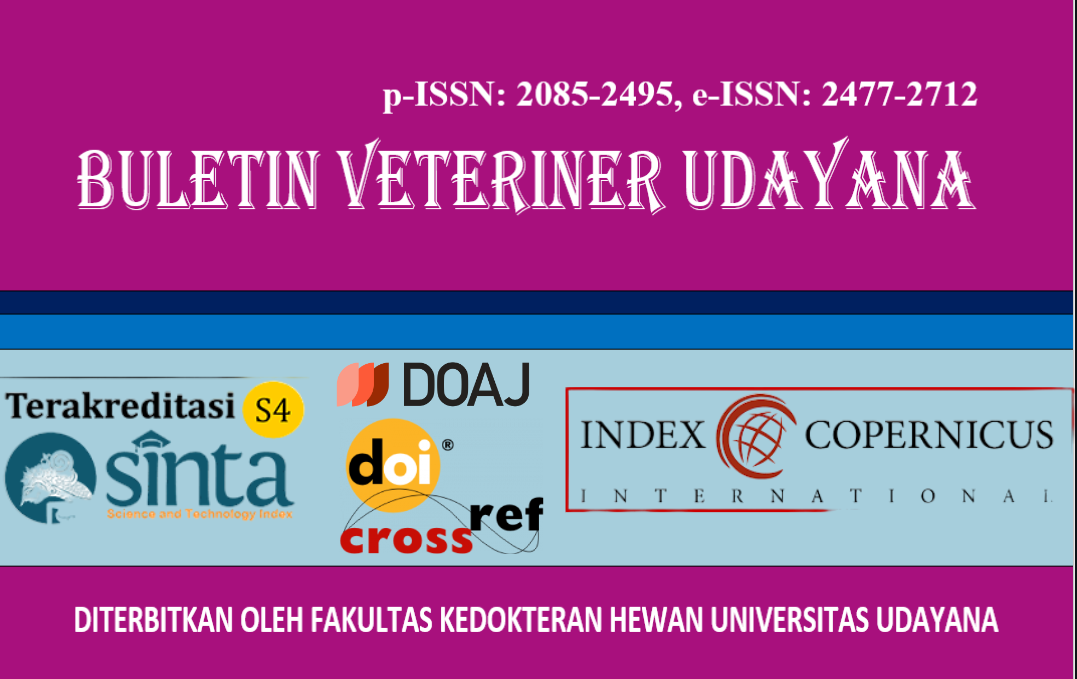NEWCASTLE DISEASE VIRUS ACCOMPANIED BY COCCIDIOSIS IN BROILER CHICKEN
DOI:
https://doi.org/10.24843/bulvet.2024.v16.i04.p36Keywords:
Newcastle Disease, Coccidiosis, Broiler, Pathological ChangesAbstract
Newcastle Disease (ND) is a highly contagious disease with a high mortality rate, showing clinical symptoms such as loss of appetite, lethargy, and diarrhea. Viral diseases are generally accompanied by a secondary infection, namely parasites. Toxicosis is a parasitic disease that causes problems and losses to chicken farms, and attacks the digestive tract in chickens. Therefore, it is necessary to conduct an examination in each laboratory to get a definitive diagnosis. In this case study, the methods of anatomical pathology examination, hispathology preparation, HA-HI examination, bacterial identification, and stool examination were used qualitatively. The results of the anatomical pathology examination found pathonomic lesions, namely ptekie in the ventricles and proventricles, hemorrhagic lungs, multifocal ulcers and ptekies in the intestines, spleen hemorrhage, renal hemoragi.




